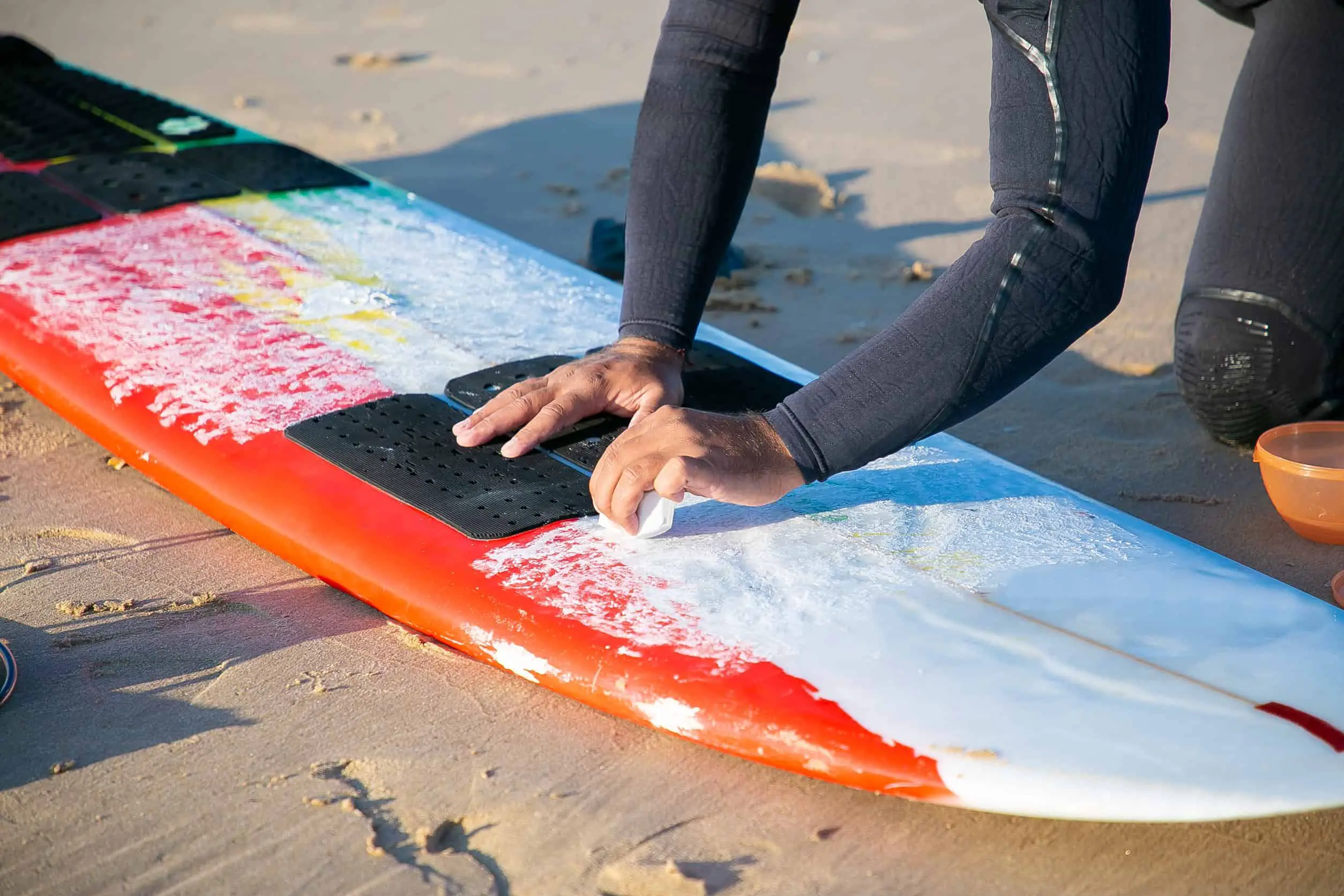Surf wax is important as it prevents you from slipping off the surfboard when riding a wave. However, it tends to become less gooey after several surfing sessions, hence the need for regular removal before reapplication. So how often should you remove wax from your surfboard?
For average surfers, removing wax every 3 months is good enough. You should remove wax from your surfboard whenever your traction with the board starts decreasing. Overall, your surfing frequency and the water temperature will greatly determine the number of times you remove wax from your surfboard.
In this article, I’ll talk more about the less-pleasant (but still important) part of surfing – removing wax from your surfboard. Read on to learn how many times you should remove wax from your surfboard and how to get the job done effectively.
How To Tell When It’s Time To Remove Wax From Your Surfboard
Waxing down a surfboard is an important part of the sport.
However, the old wax tends to become less sticky over time, a signal that it’s time to apply new wax. But as any experienced surfer will admit, applying a new base coat on old wax is a sure recipe for disaster as you’ll be slipping off your board like a first-timer—and you wouldn’t want that!
And while there is no definite number of times to remove wax, you should do so whenever you feel the board becoming less tacky. Therefore, before applying a new coat of your preferred wax, be sure to remove all the wax residue from your surfboard.
If you’re an avid surfer, then you’ll need to remove and reapply wax a lot more than the occasional surfer, who can even go months without the need to remove wax.
Water temperature also plays a huge role in determining how many times you remove and reapply wax. If you surf in warm waters, your wax is a lot more likely to melt and wear off your board during usage than colder waters.
Is It Bad To Leave Wax on a Surfboard?
Leaving old wax on a surfboard is not bad as it does not harm a surfboard. However, this can affect a surfer’s performance. That’s because the less tacky the wax, the less effective your performance will be, hence the need to remove wax regularly.
Dirt tends to accumulate on a surfboard after every session, reducing the wax’s grip, making it significantly hard to stand on a wave. Additionally, excessively thick wax affects a surfboard’s balance, meaning you might struggle to navigate along with the wave.
Therefore, after a surfing session, you can run a wax comb with the serrated side across the deck to ensure the wax maintains its texture, making it sticky enough for the next session.
And if it’s been several months since you hit the waves, you can also run the wax comb over the surface to expose fresh wax, which should be enough for the next session. But don’t hesitate to apply new wax if the old wax isn’t sticky and effective enough.
How To Remove Wax From Your Surfboard
Sure, removing old wax from your surfboard isn’t as exciting as catching a solid wave, but it’s a highly crucial procedure that every surfer needs to do every now and then.
Below are steps to take when removing wax from your surfboard.
Place the Board in Direct Sunlight
The first step requires little work as you’ll need to place the board in a strategic location in direct sunlight. Most people recommend leaving the surfboard exposed for approximately 15–20 minutes to make the old wax soft and gooey for easy removal.
Remember not to leave your surfboard in the sun for too long as it can get damaged.
But if the sun doesn’t come out and you need to melt the built-up wax, then you can use a heat gun or hairdryer to heat your board. Set the devices on low as extremely high settings can leave your board with grill marks.
Pouring hot water on the surface of your board might also help soften the base coat and make it easier to remove.
Choose the wax-softening method that works best for you.
Scrape the Wax Off
This step is fairly easy as you’ll be removing wax that’s already softened. You’ll need a wax removing comb to remove the wax effectively, but you can also use a credit card if you don’t have a wax comb with you.
to remove the wax effectively, but you can also use a credit card if you don’t have a wax comb with you.
You’ll want to scrape in a pattern or by sections to ensure you do a thorough job when removing the wax. Or you can choose to move from the nose to the tail, or from rail to rail.
You should continue scraping the board until you’ve removed most of the wax. As you continue to remove the wax, you’ll notice some stubborn sticky remains, which you should also remove.
Apply Wax Remover
A wax remover can help you remove the stubborn residue, ensuring you do a thorough job that leaves the surfboard surface wax-free. Alternatively, you can apply the wax remover immediately after placing the board in the sun, as it’ll make it a lot easier to scrape off the wax.
can help you remove the stubborn residue, ensuring you do a thorough job that leaves the surfboard surface wax-free. Alternatively, you can apply the wax remover immediately after placing the board in the sun, as it’ll make it a lot easier to scrape off the wax.
When using a wax remover, you may want to wipe it off the surface using a soft cloth, using circular motions from the nose to the tail (or whichever direction you prefer).
The good thing with wax remover is it softens the wax and tends to come off easily.
Wrapping Up
Normally, you’ll end up applying wax now and then to suit the water temperature at your preferred surf spot. However, the base coat wax will become weaker over time and fail to act as a canvas for your topcoat wax to stick.
When you notice that your grip is reducing, it’s probably time to remove the wax and apply a new one. Remember to heat the board either through exposure to the sun or by using a heater, hairdryer, or even hot water to make the wax softer and easier to remove.

